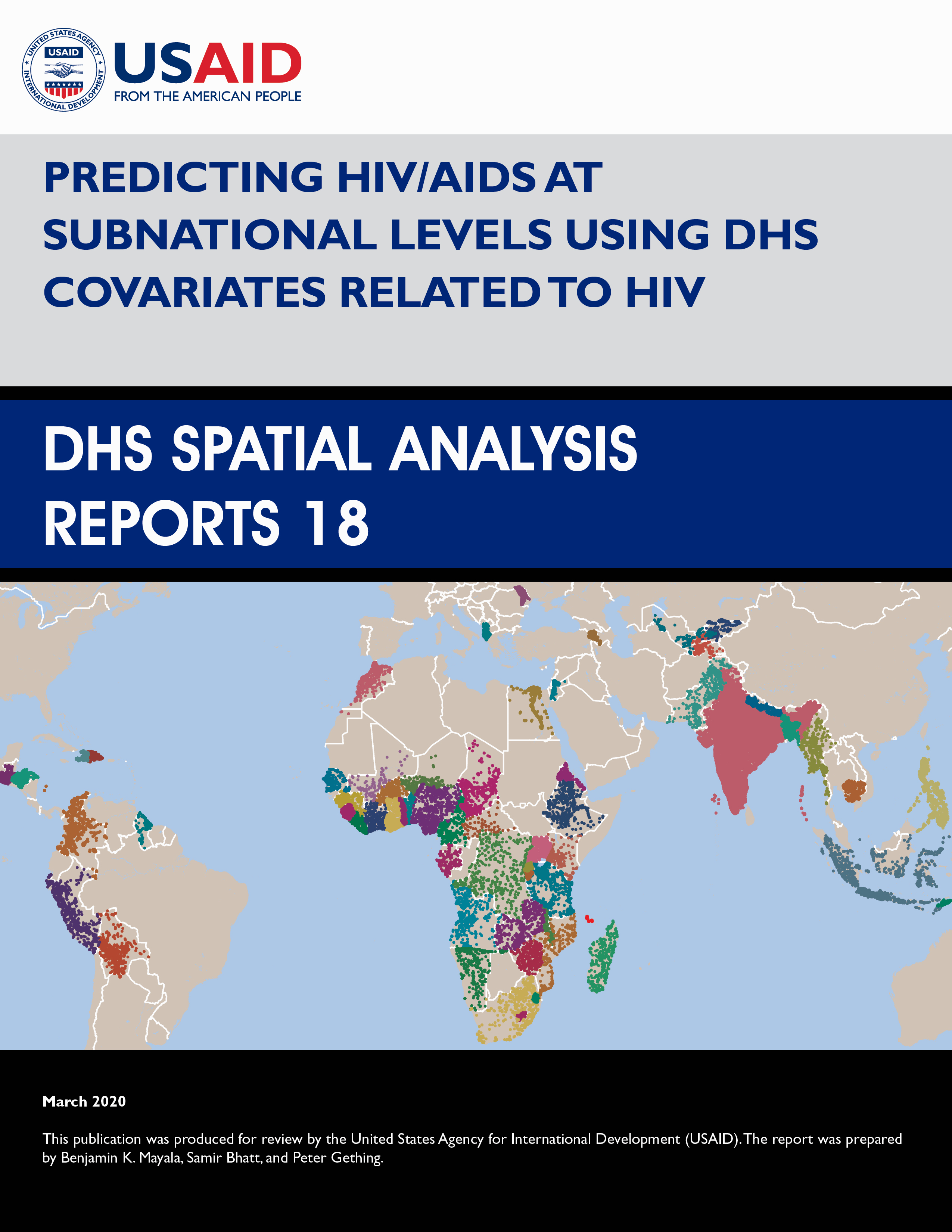There is no printed copy available to order.
Abstract:
Accelerating the scale-up of HIV prevention
and treatment approaches will limit the
epidemic to more manageable levels and enable
countries to move toward the elimination
phase. In this context, the World Health
Organization produced new treatment
guidelines and UNAIDS set the 90-90-90
targets in which by 2020, 90% of all people
living with HIV will know their HIV status,
90% of all people with diagnosed HIV
infection will receive sustained
antiretroviral therapy, and 90% of all people
receiving antiretroviral therapy will be
virally suppressed. Most household surveys
such as the Demographic Health Surveys and
the AIDS Indicator Surveys are designed to
provide reliable estimates of survey
indicators primarily at the national level,
as well as the first subnational
administrative level. To better address the
need for fine spatial and lower level
(district) estimates, geospatial modelling
techniques that can leverage existing survey
data, spatial relationships between survey
clusters, and relationships with geospatial
covariates have become increasingly popular
in mapping key development indicators at high
spatial resolutions.
In this report, we use a multitask Gaussian
process (GP), in which we use aggregated
spatial coordinates and fit multiple Gaussian
processes to HIV prevalence and other
indicators such as women who reported condom
use at last high-risk sex with a non-
cohabiting, non-marital partner or the number
of partners in lifetime for women. However,
instead of using these Gaussian processes
independently, we also model the cross
correlations between all indicators. This
methodology allows for all indicators to
inform each other and to increase the
predictive power of the model. In addition to
prediction, the joint multitask framework
also allows for a unified treatment of
uncertainty that provides robust uncertainty
intervals.
For the first time, the proposed approach
uses indicators that are actually relevant to
predicting HIV prevalence. We also utilize a
Bayesian framework and therefore have a
robust treatment of uncertainty. We foresee
many applications of this approach to other
diseases in the future.
 Predicting HIV/AIDS at Subnational Levels using DHS Covariates related to HIV (PDF, 5314K)
Predicting HIV/AIDS at Subnational Levels using DHS Covariates related to HIV (PDF, 5314K)
